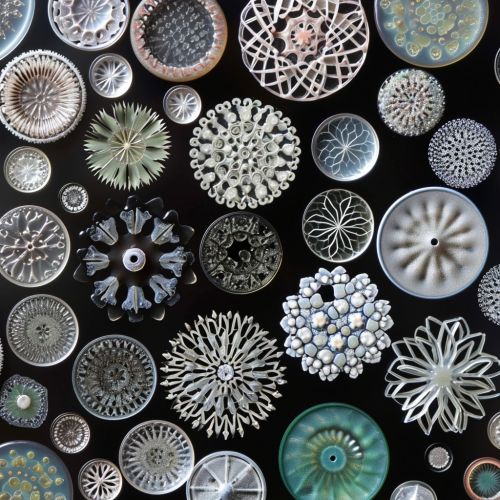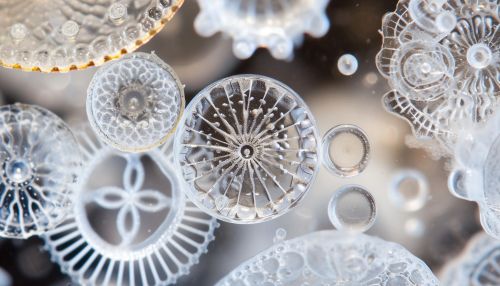Diatom
Overview
Diatoms are a major group of algae, and are among the most common types of phytoplankton. They are unicellular organisms that exist as solitary cells or in colonies, which can take the shape of filaments, ribbons, stars, or other forms. Diatoms are known for their unique ability to create intricate cell walls, or frustules, made of silica. These frustules display a wide variety of forms, some quite beautiful and ornate, but usually consist of two asymmetrical sides with a split between them, hence the group name.


Biology
Diatoms are photosynthetic organisms, meaning they convert light energy into chemical energy through photosynthesis. They possess chloroplasts for this purpose, which are typically golden-brown due to the dominance of carotenoids and fucoxanthin, a type of accessory pigment. Diatoms are unique among photosynthetic organisms in that their cell walls are composed of silica, a component of glass. This characteristic, combined with the diversity of diatom species and the intricacy of their cell walls, makes diatoms a subject of interest for both biological and materials science research.
Ecology
Diatoms play a crucial role in the ecosystem. They are a primary food source for many marine and freshwater organisms, including small invertebrates and fish. As primary producers, diatoms contribute significantly to the global carbon cycle. They are responsible for about 20% of the world's photosynthetic activity, comparable to the contribution made by all the world's tropical rainforests combined. Diatoms are also important in the cycling of other nutrients, including nitrogen and phosphorus.
Evolution
Diatoms are believed to have evolved around 200 million years ago and have since diversified into over 200,000 species. Their evolution is marked by the development of a unique cell wall made of silica, which has allowed them to thrive in various environments, from oceans to freshwater bodies, and even in moist soils. The fossil record of diatoms is extensive, with beautifully preserved specimens found in sedimentary rocks around the world.
Research and Applications
Diatoms have a variety of applications in science and industry. In paleontology and geology, the presence of certain diatom species can be used as a bioindicator of past environmental conditions. In materials science, the intricate silica structures of diatom frustules are studied for their potential applications in nanotechnology. Diatoms are also used in the production of certain types of paint and in the filtration of beer and wine.
